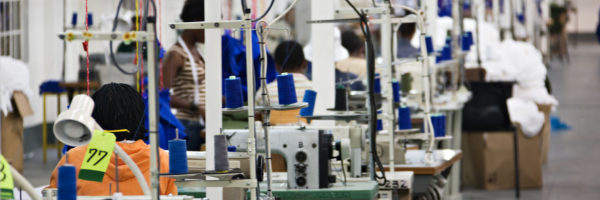

According to a study done by scholars of the Bangladesh University of Textiles (Butex), Bangladesh's apparel sector is losing $0.70 for every piece of apparel the country exports (Akter, 2022). Another issue identified in the study is the big volume of waste being generated as a byproduct of manufacturing processes.
This study list cotton lint, damaged yarn, fly fibre, scrap yarn, greige, rejected coloured fabric, excess finished fabric, unfinished fabric, unfinished cones, fabric cut pieces, excess apparel etc as waste materials. The goal of the study was to build a conceptual model to help Bangladesh Apparel Industry achieve sustainable development goal –12.
The data for the study was collected from 17 textile and apparel factories. The raw material was tracked through 4 stages to the finished product. The first stage is spinning, where raw cotton is transformed into yarn. In this process, the study found that to produce 100 Kg of yarn 37.3 Kg of cotton is wasted. The next process tracked was fabric manufacturing, where yarn is converted to greige fabric. Waste in this process is 2.5 Kg. The next process tracked is wet processing. This is a combination of three processes of apparel manufacturing i.e., dyeing, finishing, and washing. This total process waste is 18.8 Kg. The final process tracked is apparel manufacturing, here fabric is converted into apparel ready to export. Waste in this process is 11.8 Kg.
The study also identified a secondary local underground market for this garment waste called ‘Jhute Market’. According to data from the study this market process 15 million jhut fibre every month. This is an informal business. This is an example of circularity in the apparel industry. However significant value is lost as waste material is sold cheaply instead of being reused.
One of the primary reasons for this could be the lack of accurate data on the amount of waste being produced through various stages of production. Systematic data tracking and using this data to optimize the apparel manufacturing process could be a way forward to get more value out of this waste as no system can be 100% efficient due to thermodynamics.
Source:
Photo Courtesy: Canva
